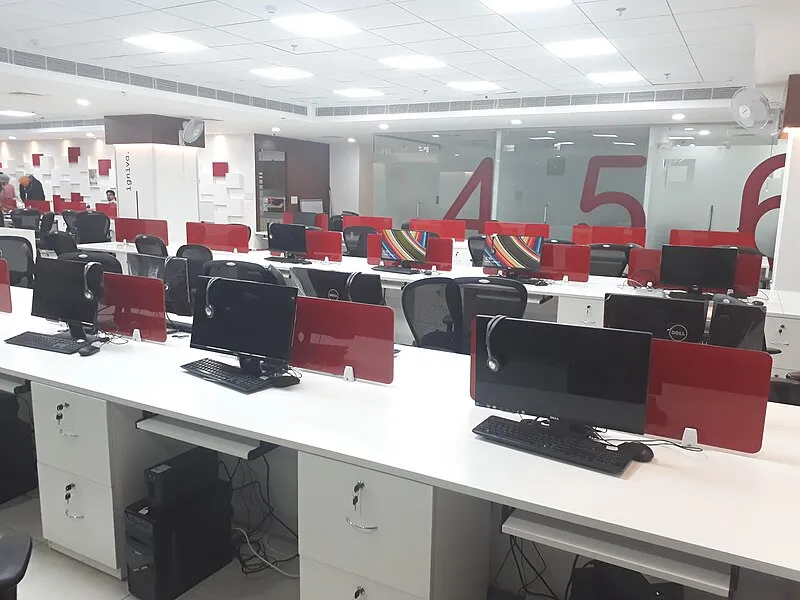Image Credit: wikimedia.org
Choosing the right type of commercial property is a critical decision for any business in London. Understanding the differences between office space and retail space can help you make an informed choice that aligns with your business needs. Both types of properties serve distinct purposes and come with their own sets of advantages and considerations. Here’s a comprehensive guide to help you distinguish between office space and retail space in the vibrant city of London.
Purpose and Functionality
Office Space
Office space in London is designed primarily for businesses that need a place to conduct their administrative and professional activities. These spaces are used by companies across various industries, including finance, marketing, IT, and more. Key functionalities of office space include:
Workstations and Offices: Office spaces typically have desks, cubicles, and private offices for employees to work.
Meeting Rooms: These are essential for internal meetings, client presentations, and team collaborations.
Reception Areas: A welcoming reception area is often included to greet visitors and clients.
Breakout Areas: Spaces for employees to relax and take breaks are common in office environments.
Retail Space
Retail space in London is designed for businesses that sell products or services directly to consumers. This type of space is suitable for shops, boutiques, restaurants, and other customer-facing businesses. Key functionalities of retail space include:
Showroom or Sales Floor: The primary area where products are displayed and sold.
Customer Service Areas: Counters or desks where transactions take place and customer service is provided.
Storage: Back Rooms or stock areas for storing inventory.
Display Windows: Important for attracting customers with visual merchandising.
Location and Accessibility
Office Space
Office spaces in London are usually located in business districts or areas with a high concentration of commercial activities. Proximity to other businesses, transport links, and amenities like restaurants and banks is crucial. Accessibility for employees is a key consideration, so good public transport connections and parking facilities are often important. Key office districts in London include the City of London, Canary Wharf, and South Bank. When searching for offices to rent in London, it’s important to consider these aspects to ensure convenience for your team and clients.
Retail Space
Location is even more critical for retail spaces. They need to be easily accessible to customers, ideally in high footfall areas such as shopping centres, high streets, or busy neighbourhoods. Visibility and accessibility play significant roles in attracting customers and driving sales. Retail spaces in London benefit from being close to complementary businesses that can drive additional foot traffic. Popular retail locations include Oxford Street, Covent Garden, and Westfield shopping centres.
Design and Layout
Office Space
The design of office space in London focuses on creating a productive and comfortable work environment. This includes ergonomic furniture, adequate lighting, and climate control. Open-plan layouts are common to facilitate communication and teamwork, but private offices and meeting rooms are also necessary. Flexibility in design allows businesses to customise the space according to their specific needs.
Retail Space
Retail spaces in London are designed with the customer experience in mind. The layout should guide customers through the store, showcasing products effectively and making the shopping experience pleasant. This often involves creative interior design, strategic product placement, and appealing displays. Retail spaces need to be visually attractive to draw in customers and encourage purchases.
Leasing and Costs
Office Space
Leasing office space in London typically involves long-term commitments, ranging from three to ten years. The cost of office space can vary widely depending on the location, size, and amenities. Additional costs might include maintenance, utilities, and services such as cleaning and security.
Retail Space
Leasing retail space in London can also involve long-term commitments, but the costs are often higher due to the prime locations required for successful retail operations. Retail leases may include clauses related to turnover rent, where rent is partly based on the sales revenue of the business. Additional costs for retail space can include marketing contributions, maintenance of common areas, and higher utility bills due to increased foot traffic and longer operating hours.
Regulatory Considerations
Office Space
Office spaces in London are subject to regulations that ensure the safety and well-being of employees. This includes health and safety standards, fire safety regulations, and accessibility requirements. Businesses must comply with these regulations to create a safe working environment and avoid legal issues.
Retail Space
Retail spaces in London face a broader range of regulatory considerations. These can include health and safety standards, particularly for food and beverage establishments, as well as specific regulations for selling certain products like alcohol or pharmaceuticals. Retail businesses also need to comply with trading laws, advertising standards, and consumer protection regulations.
Flexibility and Adaptability
Office Space
Office spaces in London often offer more flexibility in terms of layout and use. Businesses can customise their office space to suit their operational needs, whether that means creating open-plan areas, private offices, or specialised rooms for specific functions. This adaptability makes office space suitable for a wide range of businesses.
Retail Space
Retail spaces in London need to be highly adaptable to changing market trends and consumer preferences. Retailers may need to update their store layout and displays regularly to keep the shopping experience fresh and engaging. However, the core function of retail space remains consistent: providing a place for customers to browse and purchase products.
Marketing and Branding
Office Space
The marketing and branding of office space are generally less focused on the physical location and more on the business itself. Office spaces need to provide a professional environment that supports the company’s brand image and facilitates business operations.
Retail Space
For retail spaces in London, the physical location is a critical part of the brand’s marketing strategy. The store’s appearance, layout, and atmosphere all contribute to the brand identity. Effective use of signage, window displays, and in-store promotions are essential for attracting customers and creating a strong brand presence.
Customer Interaction
Office Space
Customer interaction in office spaces is usually more formal and appointment-based. Clients or partners visit for meetings, consultations, or presentations. The focus is on providing a professional and comfortable environment for business interactions.
Retail Space
Customer interaction in retail spaces is continuous and varied. Staff must be trained to engage with customers, provide product information, and handle transactions efficiently. Creating a welcoming and enjoyable shopping experience is paramount for customer satisfaction and loyalty.
Conclusion
Understanding the differences between office space and retail space in London is crucial for making informed decisions about your business premises. Office space is designed to support professional activities and provide a productive work environment, while retail space is tailored to attract and serve customers directly. Both types of spaces come with unique considerations regarding location, design, costs, and regulations. By carefully evaluating your business needs and the characteristics of each type of space, you can choose the right property that will help your business thrive in the bustling city of London.
Also Read: What Are Office Storage Drawers Used For?







